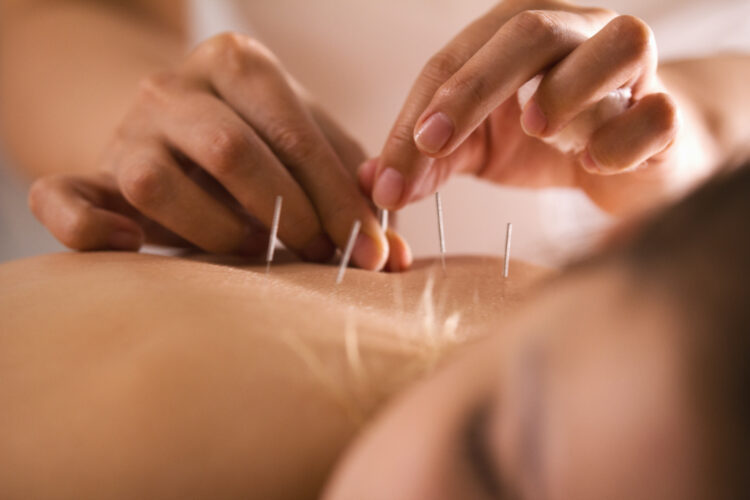
Muscles are a bunch of fibers in muscular groups and work by contracting when fired by an electrical impulse from the nerves. I think of these as a bunch of cables bundled together and when tension starts due to poor posture, overwork or injury, the tension or the cause of muscular dysfunction tends to start in the deeper layers or the inner core of this bunch of cables. Over time, the body compensates or adjusts and the rest of the muscle group will slowly tense up which results in a tighter muscle group overall. A simplistic way of imagining this process is it tightening from the inside out.
To resolve this tension, I find that manual therapies can do a good job in releasing most of the outer layers which may be enough to feel better after the session but may come back quickly as the core of the muscle group is still tight and the body is very good at being stubborn, returning to its “original” state even if it is one that causes pain. Deep tissue manual therapies can help with releasing this deeper tension which may be the core of the problem with good technique but most people would agree that this is usually quite painful. This isn’t because of the techniques but the way the body perceives pain.
Interestingly, acupuncture is a more gentle way of reaching these deeper layers where the tension may originate from. Typically, you may feel a prick followed by a dull ache, numbness, heaviness or nothing. For those who ask about whether acupuncture is painful or not, I believe pinching yourself is more painful.
Most commonly, injuries happen due to muscular imbalances or dysfunction excluding constitution weakness due to disease. Muscle groups work in pairs to help balance our posture, the way we walk and any other movements. But, due to poor posture or pushing yourselves in the gym will cause tension to build up in certain groups which develop the uncomfortable tension. The body is great in locking up in these positions which reduces the overall muscular contractile length. In the gym, this results in loss of power or a sensation of weakness as the muscles aren’t able to fully release and contract which then reduces efficiency and results gained in the gym. Similar to a partially compressed spring, you wouldn’t be able to compress as much as a completely uncompressed spring.
For the rest who aren’t in the gym as often, you hear stories of friends or family where their lower back is “thrown out” or suddenly is painful from a sneeze or lifting something light. The pre-existing tension can be suddenly pulled or stretched (imagine pulling Velcro quickly compared to slowly) which causes micro tears along pre-tensed muscle fibers which lead to inflammation and swelling. On the flip side, shortened tight muscles repetitively contracting to do work can also cause irritation as that weakness felt due to the shortened contractile length mentioned above will push to try and activate the muscle group harder but if the spring is fully compressed, it can’t physically do anymore work leading to inflammation and swelling.
An acute injury is commonly comprised of some combination of the above patterns and it is the inflammation and swelling which give you the pain signal. It is the body’s natural response to get you to stop moving so that the body can naturally heal itself. In our fast paced society, this is very inconvenient and affects our daily activities.
Acupuncture helps reduce the inflammation and swelling by stimulating and enhancing the body’s own healing abilities (white blood cells and other immune cells) via the micro trauma effect. My approach is to treat the affected area, so the placement of needles will be around the injury site where the inflammation and swelling is the worst. The needles act like pointers for the body directing where the cells to go so that the inflammation and swelling will be reduced. Then the swelling and inflammation is reduced, the sensation of pain is reduced. If the healing process is sped up at the injury site, the recovery of the injury is also sped up over a course of treatments compared to the body’s own natural abilities.
Lastly, another important aspect about musculoskeletal conditions is the physical health of the muscles and tendons themselves. Muscles should be supple and soft when not active and only tense when activated whilst tendons should be elastic or have a springy quality. This can only happen when there is good nourishment to the muscles and tendons. In Chinese Medicine, the Spleen* part of the digestive system which is in charge of production of Qi and Blood (nourishment) and distribution throughout the body, this directly influences the quality of the muscles or muscle development. In Chinese medicine, the Liver* governs the tendons which give the body the ability to move and it is said that strength comes from the tendons, not the muscles. Unfortunately, the Liver* is affected by stress which may affect the strength of the tendons. Usually under stress, the physical manifestations tend to be tension being built up in the body, it’s like the body’s guarding reaction but as mentioned above, and pre-tension can lead to injuries especially in the gym or poor posture in the office.
The goal of acupuncture is to help with:
- Reducing swelling and inflammation resulting in reduction in pain.
- Release tension in the muscles to allow full muscular contractile function.
- Improve nourishment of the muscles to improve quality of the muscles.
*NB: The organs described are functional as per Chinese medicine and do not affect the physiological function as per western medicine.

